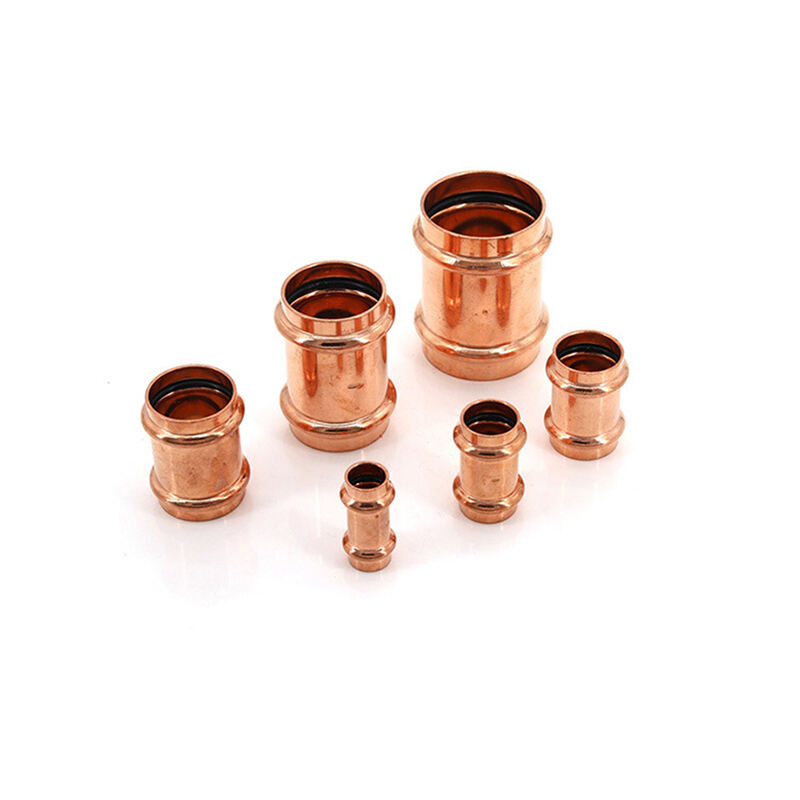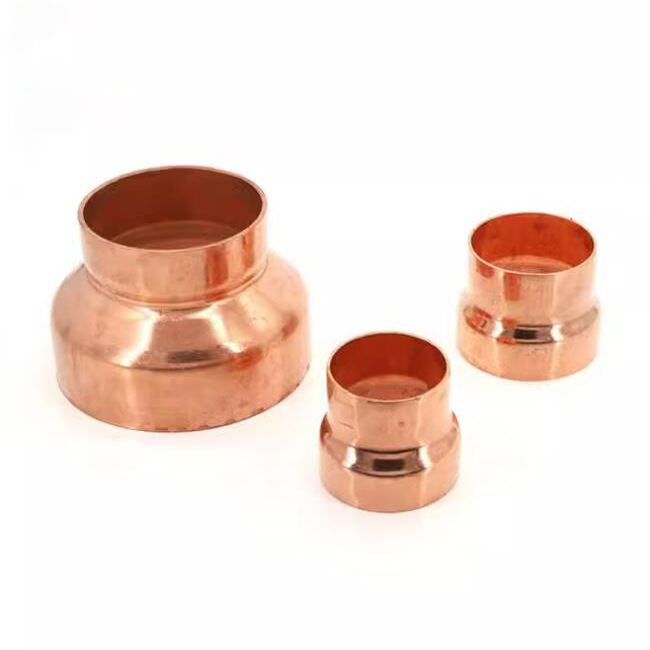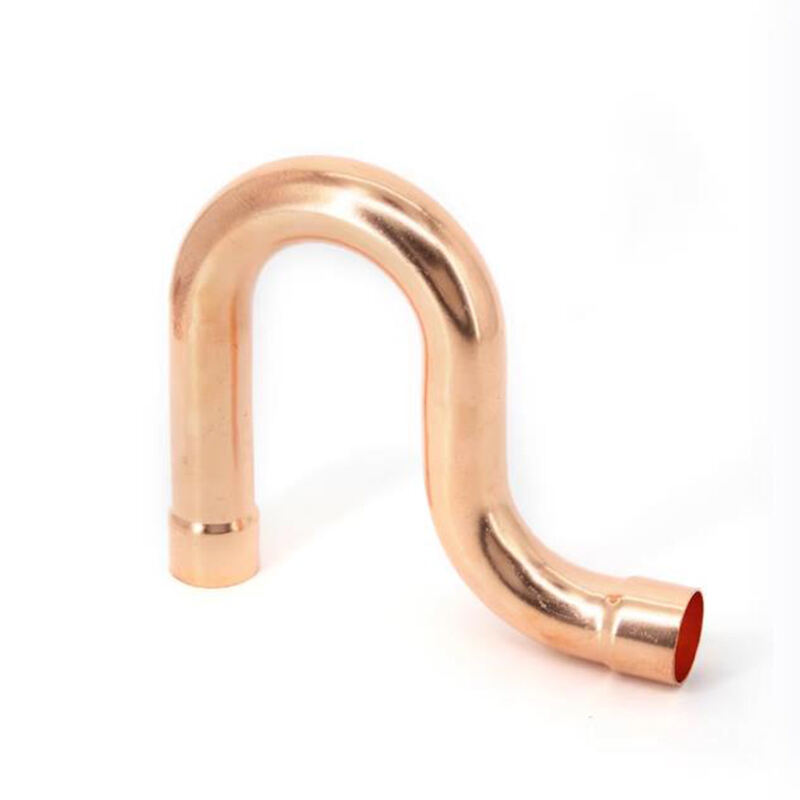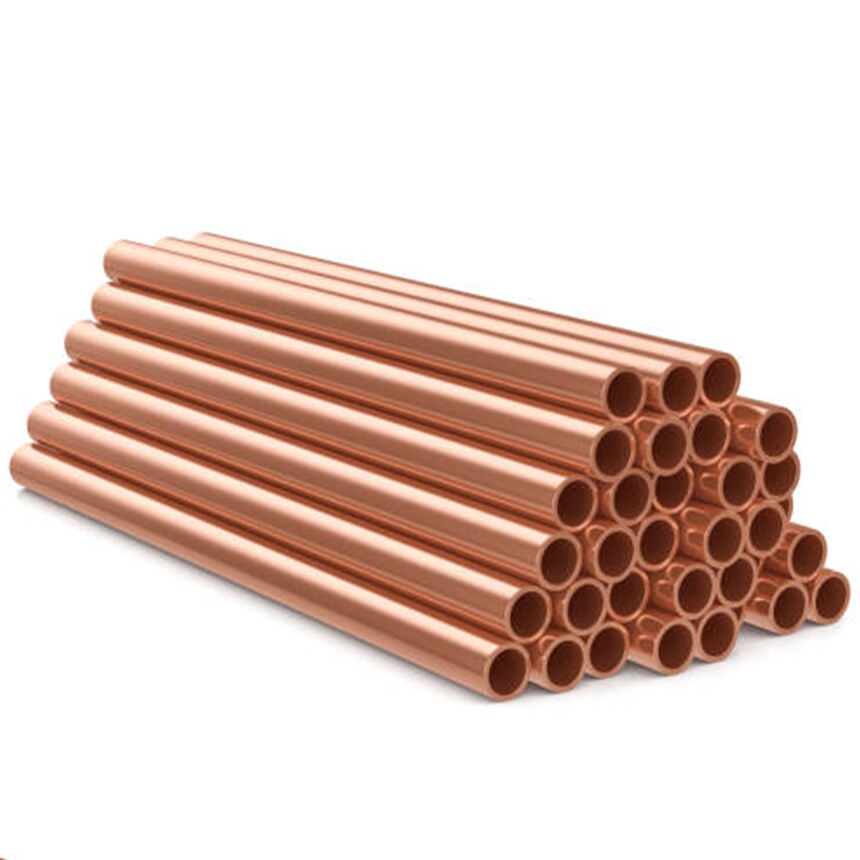Understanding Copper Pipe Joints and Their Importance
Why Copper Pipe Joints Matter in Plumbing Systems
Copper pipe joints are really important parts of any plumbing system because they create those tight connections that stop leaks and keep everything working properly. What's great about these joints is how they handle all sorts of conditions. They can take on pretty high heat without breaking down and hold up under pressure too, which means plumbers can install them almost anywhere from home kitchens to big office buildings. Studies have shown that when installed correctly, copper pipes tend to stick around for half a century or more before needing replacement. That kind of longevity beats most alternatives out there. For homeowners and building managers alike, investing in copper piping means fewer headaches down the road since it just keeps performing year after year without surprises popping up at inconvenient times.
Key Characteristics of Durable Copper Fittings
What makes copper fittings so durable for plumbing? Well, they stand up to oxidation and corrosion much better than other materials out there, which means they last longer before needing replacement. Another big plus is copper's natural ability to fight microbes, making it especially good for water systems where people actually drink from the pipes. The metal itself bends pretty well too, so plumbers can work with it even in tight spaces without breaking a sweat. This flexibility helps extend how long whole plumbing systems stay functional across different types of buildings. No wonder most professionals still reach for copper when installing new lines or replacing old ones in commercial settings where reliability matters most.
Types of Copper Pipe Joints and Connectors
Soldered Joints: Traditional Sealing Method
Soldered joints have pretty much always been the go-to way to seal pipes in plumbing work because they're really strong and last a long time. Most plumbers know these connections can handle quite a bit of heat too, which is why they show up everywhere from home kitchens to big industrial setups. The tricky part though? Getting the solder to melt just right so it fills all the gaps between the pipe and fitting. A lot of folks try to rush through this step and end up with weak spots that eventually leak. Industry numbers back this up too many plumbing problems still come down to bad solder jobs. Anyone working with copper pipes should take extra care when heating those joints, since even small mistakes can turn into major headaches later on.
Press-Connect Fittings for Modern Installations
More plumbers are turning to press connect fittings these days because they install so fast without needing any soldering work. What's great about them is how they create a solid seal every time, which means fewer chances of water leaking through connections. According to some industry reports, plumbers can save almost half their time on jobs when using these fittings instead of traditional solder methods. For contractors always looking to finish projects quicker while still getting good results, this kind of time savings really adds up over multiple installations. Many experienced technicians have found that switching to press connect systems not only speeds things up but also reduces the risk of mistakes during busy job sites where precision matters most.
Compression and Flare Fittings Explained
People love compression fittings because they make connecting things fast and easy, plus they can be taken apart again when needed. That's why these fittings show up all over the place in different plumbing jobs around town. Flare fittings tell a different story though. These bad boys need to create really strong seals, so plumbers usually grab them for tough applications like natural gas lines or heavy duty hydraulic systems where leaks just won't cut it. Know what fitting goes where matters a lot if we want our projects to work properly without headaches later on. For anyone wanting to get hands-on with actual brass fittings and see how they fit together, local hardware stores often have samples available for inspection before purchasing.
Brass vs. Copper Plumbing Fittings: Pros and Cons
People often get stuck trying to decide whether to go with brass or copper plumbing fittings. Brass has become popular because it stands up better against rust and corrosion, which makes sense why plumbers pick them for areas where water quality is an issue. Copper on the other hand weighs less and handles temperature changes without cracking as easily. Cost wise, brass tends to run about 30% more expensive than copper per unit, but many contractors argue that brass lasts longer in harsh conditions like industrial settings. Knowing this difference matters when picking out materials for residential versus commercial projects. Anyone working on major plumbing installations should take time to compare both options side by side before making a final decision.
Installation Best Practices for Copper Pipe Connections
Cutting and Deburring Copper Pipe Correctly
Getting the cutting and deburring right when working with copper pipes makes all the difference for good connections down the line. When done properly, cutting leaves behind a nice straight edge that really matters for those tight seals we need. Taking care to remove those sharp bits and burrs during deburring stops accidental damage to fittings and creates that perfect fit that keeps everything leak-free. Most plumbers swear by quality pipe cutters for getting those smooth, consistent slices across the pipe, while deburring tools handle the finer details on those edges so assembly goes much smoother. Beyond just making installation faster, these little extra steps actually extend how long the whole plumbing setup will last before needing repairs or replacements.
Proper Flux Application and Soldering Techniques
Getting the right amount of flux on there and knowing how to properly solder makes all the difference when connecting copper pipes. The flux is really important because it helps the solder stick better and lets it run smoothly into those joints once things start heating up. To get a solid connection, plumbers need to figure out just how long and hot to heat the copper before actually adding the solder. Industry data shows that about 30% of plumbing problems come from bad seals, which is why getting these basics right matters so much for avoiding leaks down the road. When someone takes their time with each step and controls everything carefully, the resulting connections tend to hold up well over time without leaking.
Ensuring Leak-Free Pressed Joints
Getting those pressed joints completely leak free means applying just the right amount of pressure every single time. When the pressure isn't even across the joint, cracks start forming that eventually turn into leaks nobody wants to deal with later on. Checking regularly makes all the difference too. A quick look around during routine maintenance often catches problems before they become major headaches down the road. Most manufacturers have pretty clear instructions about how their systems should be installed, so sticking close to those specs matters a lot for making sure connections hold up under normal conditions. Their manuals usually stress proper pressure settings and regular checks because they know what works from experience. Plumbers who follow this advice tend to see fewer callbacks for repairs and generally happier customers in the long run.
Maintenance and Troubleshooting Copper Pipe Systems
Identifying Common Issues Like Corrosion and Leaks
Keeping copper pipes in good shape through regular checkups helps catch small problems before they become big headaches like corrosion and leaks. Copper tends to corrode when it reacts with certain chemicals in water, so knowing what kind of water runs through the system makes all the difference for prevention. Water with a pH around 6.5 to 8.5 generally plays nice with copper pipes. Most plumbers will tell you that leaks show up during normal inspections, which is why ongoing maintenance really matters. Experience shows that these routine checks usually spot leaks early enough to fix them without causing major damage downstream.
Long-Term Care for Copper Pipe Connectors
To keep copper pipe connectors working well over time, regular cleaning and close inspection are necessary. These maintenance tasks help extend how long they last while keeping the whole system running efficiently. Protective coatings work wonders at cutting down on corrosion problems, particularly important for homes in humid climates. Knowing what kind of water runs through pipes locally gives clues about possible issues before they become big problems for copper plumbing. Homeowners who pay attention to these details and plumbers doing routine checks can spot trouble early and fix small issues before they turn into costly repairs or complete system failures.









